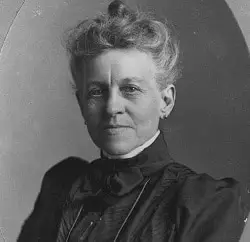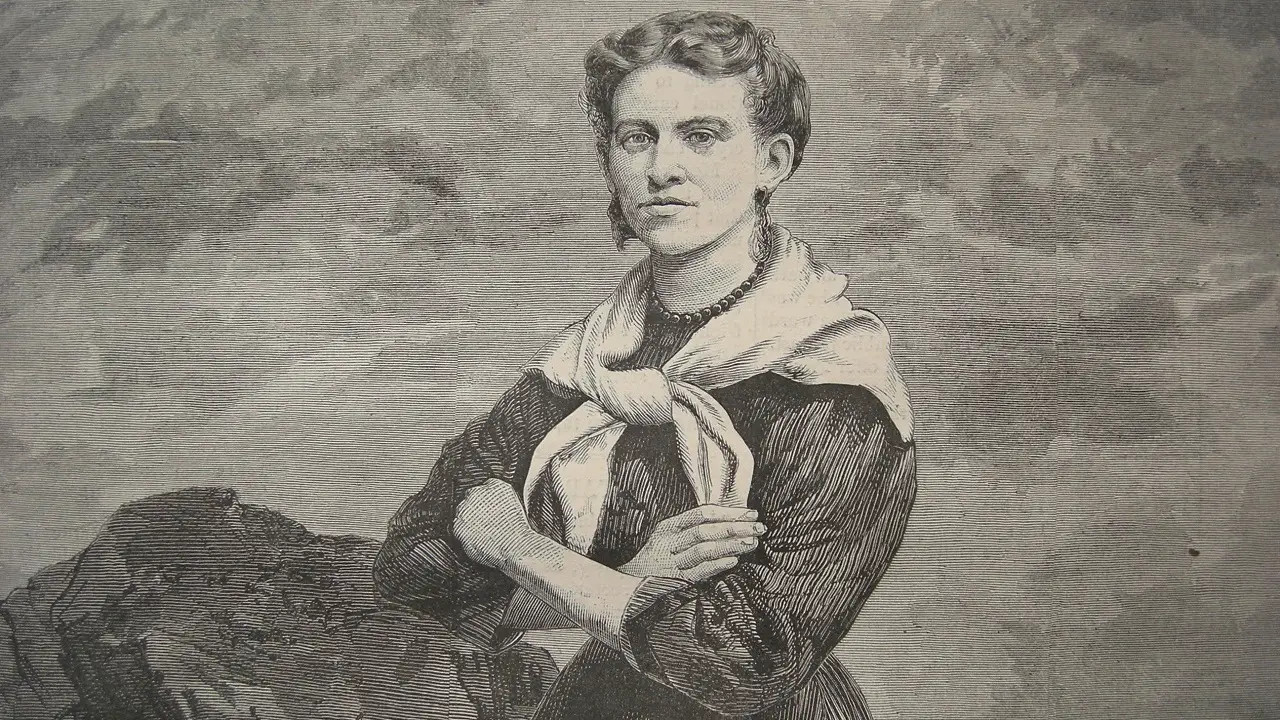Long before there was Wonder Woman, or any other tights-clad Marvel hero for that matter, there lived a woman named Ida Lewis. Ida lived right beside the sea in Rhode Island, where she rose to fame for taking her role as a lighthouse keeper to another level entirely.
From the age of just 12 years-old all the way up through her mid-60s, Ida became famous for rescuing tons of people who otherwise would have drowned at sea. As a result, she would become a woman known by many names. The Society of the American Cross of Honor called her “The Bravest Woman in America.” President Ulysses S. Grant awarded her the Gold Lifesaving Medal. She became known in popular lore as the “Grace Darling of America,” after an earlier but arguably less heroic British heroine. So who was this Ida Lewis and what exactly did she do?
Working up the lighthouse keeping ladder

Ida was born in 1842 in Newport, Rhode Island as the daughter of a guy named Captain Hosea Lewis. Not only was Ida’s dad apparently impressive enough to earn the title of Captain, but he was also installed as the official keeper of the nearby lighthouse Service.
Back in the days before GPS navigation and cell phones, the lighthouse keeper was the guy who everybody at sea counted out to help get them home. His duties included things like keeping the lighthouse lamp full of oil, making sure it burned through the night, and extinguishing it at dawn.
Regardless, things were rolling right along until disaster struck just a few months into the Captain’s job. After suffering a killer stroke, the Captain found himself disabled and unable to fulfill his light keeping duties. Luckily the women in Ida’s family were not afraid to step up to the plate. Ida and her mom kept things running at the lighthouse, all while taking care of the disabled Captain and Ida’s sickly little sister.
This went on until 1873 when the Captain finally passed away and Ida’s mom officially took on the title of lighthouse keeper. Unfortunately, she too began to succumb to ill health in the ensuing years and passed away in 1877. Around 1878, Ida found herself next in line to officially inherit the title of the keeper of Lime Rock lighthouse.
An impressive early resume
Though she didn’t officially become the “keeper of the light” until the 1870s, by the time Ida took over the reins, there was no one alive better suited for the job. By that point, rescuing a drowning guy was pretty much what she called an average Tuesday, as she began learning the ropes incredibly young.
You know how some people say that they had to walk uphill to school both ways in the snow when they were growing up? Ida had to row there. One of her tasks was to load the other kids in her family into a small rowboat and row them all back and forth to school every day, no matter what kind of mood the sea was in. As you might imagine, this was a pretty dangerous feat but left her with better boat handling skills than most grown men.
Ida gets her rescue on

Her rescue career itself all began back in the summer of 1859 when four young men set out for a nice row that went horribly wrong. Long story short, their boat ended up capsizing and they found themselves in the water trying to hang on to the hull for dear life. Unfortunately for them, things were pretty slippery and the sea kept trying to pull them out with undercurrents and claim them as its own.
Luckily, Ida spied them from the lighthouse, set out in her boat, and rescued them all like a boss. Though she provided them with warm food and water afterward, the four bros apparently found it a bit embarrassing that they had to be rescued by a girl. Neither Ida nor the bros in question ever mentioned the rescue until years down the road.
Here to save the day… and the occasional sheep
A few years later, some soldier had a few drinks and decided to take Ida’s brother’s boat for a drunken joy sail. To the surprise of no one, things did not turn out well. The guy somehow managed to get his foot stuck in the bottom of the skiff and probably would have drowned if Ida hadn’t come to the rescue yet again.

As the years rolled on, Ida’s under-the-radar heroics continued as she managed to rescue more drowning guys and even a sheep. Yes, a sheep. Apparently one wondered out to sea one night during a storm and to men went in to try and rescue it. Ida was ultimately forced to materialize to rescue everyone involved, including the sheep.
The rescue that put her on the map
The rescue that really put Ida on the map, however, came in 1869 when she heard the cries of two drowning men. The men turned out to be Sergeant Adams and Private McLaughlin from Fort Adams, who Ida rowed out to pull from the murky depths. As one account described it, “She needed all her months and years of exercise and rowing experience then. The waves broke over her boat threatening to swamp her again and again, but she finally reached the light with the two half-drowned men.”

As the story goes, when the men saw her coming to save them, one said, “It’s only a girl.” It was then that Ida got the chance to show the world just how badass a girl can be. Once the papers got ahold of the tale, Ida’s fame sprang to life pretty much overnight.
One woman’s legendary legacy
Even as she was lauded with countless medals and honors, Ida always remained down to earth and modest. You better believe she kept up her rescue habits and though only she knew just how many rescues she executed, 18 have been officially recorded.
She remained the keeper of Lime Rock Lighthouse until she died in 1911 when it was renamed in her honor. Around 1,400 people attended her funeral and countless more mourned her death around the world.
But there's more. Check out these bussin stories:
- Beauty
 Meet the young ladies who choose to live as dolls There is a growing community of young people who choose to use makeup and cosmetic surgery to make themselves look like dolls.
Meet the young ladies who choose to live as dolls There is a growing community of young people who choose to use makeup and cosmetic surgery to make themselves look like dolls. - Health
 15 bizarre instant stress relievers that actually work From blowing up a balloon to chewing gum and smelling lavender, science vouches for these surprising stress killers.
15 bizarre instant stress relievers that actually work From blowing up a balloon to chewing gum and smelling lavender, science vouches for these surprising stress killers. - For the guys Love
 Guys, if we want you to get us pregnant, we will It's an age old question you don't want to google: "How do I trick my man into getting me pregnant?"
Guys, if we want you to get us pregnant, we will It's an age old question you don't want to google: "How do I trick my man into getting me pregnant?"


